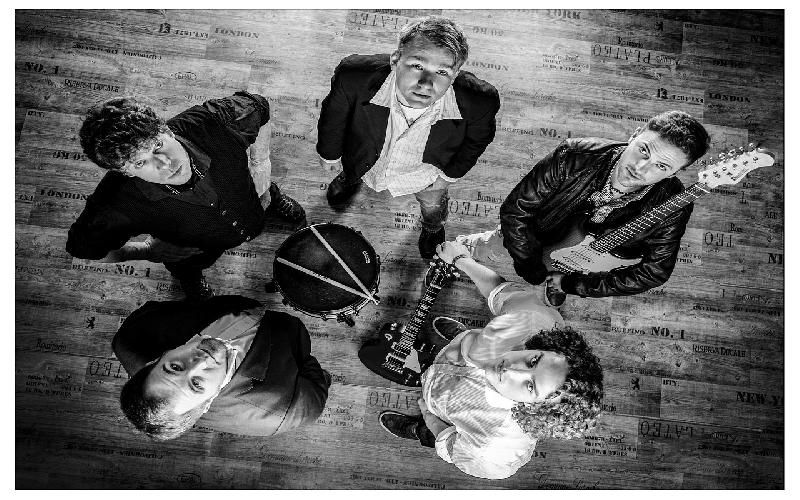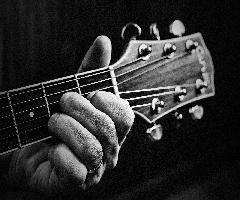5 piece formats in rock bands have been exceedingly popular since the 60s. Many bands that started as quartets have gone onto become quintets in later years, this done to further strengthen or add value to the sound of the band. The common lineup in a 5 piece rock band consists of vocalist, bassist, rhythm guitar, lead guitar and drums. Two guitarists may share rhythm guitar and lead guitar parts or one member may play lead guitar and the other rhythm guitar. In many bands that have a member exclusively for keyboards, the rhythm guitar and lead guitar parts are
played by one member.In some 5 piece bands a member may switch between instruments such as saxophone and synthesizer or guitar and synthesizer. In many rock bands post 2000 a person in a quintet performs duties of a turntablist. Unlike in majority of four-piece bands where the vocalist either plays rhythm guitar or bass, in majority of five-piece bands the vocalist concentrates only on vocal duties and seldom needs to play an instrument. In many bands that sprung from the folk movement of the 60s, vocalists in quintets used the tambourine as percussion. The use of harmonica and flute was also popular among country rock and folk rock bands in the 60s and 70s.
Popularity of Rock Quintets
Classic rock quintets of the 60s and 70s are known for their intrinsic instrumentation. The use of sublime synthesizer passages in AOR rock quintets of the 80s added new identity to rock music. A number of melodic rock bands and glam metal bands of the 80s that had formed as quartets added a fifth member for keyboards to bring a melodic textural feel. Also, the 80s thrash metal quintets and became talked about for their diverse twin riffing in song structure. Technical metal quintets and progressive metal quintets made jaws drop with their compositional structure in the 90s.
The 5 member band format has become hugely popular in heavy metal. Metal quintets in various rock genres and subgenres have floored audiences with their brand of music. From traditional rock, heavy metal, glam metal, progressive metal, thrash metal, power metal, symphonic metal, metalcore and other rock genres, 5 piece bands have become the mainstay in metal. While larger rock ensembles that consist of more than 5 persons in musical group are prevalent, the classic quintet format rules in the realms of rock and metal.
The space below showcases a list of best rock
quintets.100 Greatest 5 Piece Rock Bands: Quintets that Rocked the World
- Guns N’ Roses
- The Rolling Stones
- Deep Purple
- Avenged Sevenfold
- Radiohead
- Dream Theater
- Judas Priest
- AC/DC
- The Beach Boys
- 311
- Oasis
- Aerosmith
- Iron Maiden
- Deep Purple
- The Byrds
- Anthrax
- The Zombies
- Yes
- Pink Floyd
- The Hives
- Testament
- Genesis
- Pearl Jam
- The Sonics
- Journey
- Scorpions
- The Animals
- Children of Bodom
- Incubus
- The Strokes
- Bon Jovi
- Fleetwood Mac
- Jethro Tull
- Alice in Chains
- Dio
- Styx
- Marilyn Manson
- Blue Oyster Cult
- Nightwish
- Deftones
- Whitesnake
- Survivor
- Lamb of God
- Twisted Sister
- Evanesence
- Buffalo Springfield
- Arch Enemy
- Uriah Heep
- Rainbow
- As I Lay Dying
- Municipal Waste
- Europe
- The Dave Clark Five
- UFO
- The Guess Who
- Opeth
- Meshuggah
- REO Speedwagon
- Korn
- The Cars
- Symphony X
- Collective Soul
- Skid Row
- The Moody Blues
- Hatebreed
- Snow Patrol
- The Yardbirds
- Kamelot
- Simple Minds
- The Cure
- New Order
- Stratovarious
- Iced Earth
- Queensryche
- Pain of Salvation
- Warrant
- Death Angel
- 10,000 Maniacs
- HammerFall
- My Chemical Romance
- Steppenwolf
- Fates Warning
- Sheriff
- Bad English
- Sonata Arctica
- Cannibal Corpse
- Masterplan
- Dream Evil
- Overkill
- Dark Angel
- Edguy
- Between the Buried and Me
- Shadow Gallery
- Firewind
- Jag Panzer
- Helstar
- Rhapsody of Fire
- Sabaton
- Grave Digger
- Forbidden









